Hisense A6G Reviewed at $449.00 (55")
Product Name: Hisense A6G
Product Description: 2021 4K UHD TV
-
Design - 8.6/10
8.6/10
-
Video Quality - 8.2/10
8.2/10
-
Ports & Connectivity - 8.8/10
8.8/10
-
OS, Apps and Features - 9/10
9/10
-
Price / Quality - 8.8/10
8.8/10
Summary
Reviewed at $449.00 (55″)
Pros
- Good 4K image
- Low input lag
- Android TV
- Very low price
Cons
- Brightness output very low
- Mediocre contrast
- Limited color reproduction
- No audio immersion
Cheapest Places to Buy :
*We are a reader-supported website. When you buy through links on our site, we may earn a small affiliate commission at no extra cost to you. Home Media Entertainment does not accept money for reviews.*
Having gone through a few of the latest releases from Hisense one thing has become pretty clear. The Chinese manufacturer is able to offer TVs with specs in a price that most other brands would only dream of. They may not be able to compete for the best image quality money can buy but it seems that Hisense has a specific strategy and they stick to it very well releasing products with high value in their respective categories. And so today in our Hisense A6G review we will go to the bottom of the performance ladder and see what Hisense has to offer us here.

The A6G is the budget release they have for 2021 but even so it comes with a few interesting specs that you don’t find in such low prices. One thing that needs mentioning is that Hisense, for some reason, offers the A6G with different specs in different markets. We have seen different sizes come with both VA and IPS panels while in some markets it comes with the Android TV OS while in others it uses the VIDAA U5 OS. Also different sizes seem to offer slightly different port configurations. Just to make it clear the model we have for review is the 55″ A6G that is made for the US market and uses an IPS panel along with Android TV.
Now that we took that out of the way let’s see very quickly what this low cost release comes with. The Hisense A6G is a 4K TV that supports both HDR10 and Dolby Vision, uses a quad core processor, comes with an IPS panel with a Direct LED backlight and 60Hz refresh rate, supports DTS Virtual:X and uses the latest Android TV 10.0 which includes many features like Chromecast, voice control, Bluetooth streaming and WiFi functionality.
If you consider what you are getting for a price of $450 for the 55″ then surely in theory the Hisense A6G sounds interesting. But what will determine its success is more than just a very low price. The other Hisense TVs we reviewed recently managed to offer great value for the price asked. Does the A6G manages to continue this trend? Let’s find out.
Design
Upon first look the TV doesn’t seem all that different from the U6G when looked from the front. It certainly gives you a low budget feeling but Hisense has done a good job at offering respectable quality at a low price. The A6G seems to be slightly thinner than the U6G coming under 3″ and more specifically at 2.8″ (7.1 cm) making it look nice if placed on a wall without extruding very much. Having a Direct LED backlight instead of a FALD one certainly helps with that.
Its borders and bezels are thin enough and on par to other TVs of the same category. Now at the back we find all ports on the right side divided into two groups with one looking sideways and the other backwards. The power connector is kept separately, as usual, on the left side while the A6G doesn’t seem to have any special grooves for cable management. The electronics box is located at the center middle of the back side and this is where the holes for the VESA wall mount are also found.
The Hisense A6G is using a typical bench type stand that looks identical to the one we saw in the U6G. The legs are made out of plastic which can result in the TV wobbling slightly but not so much to risk falling down. The legs sit far apart from each other so make sure you have a big enough furniture for it. The legs don’t have any special grooves in them as we have seen in so many other stands of the same type to help hide the cables while their height is measured more than 3″ meaning that most soundbars should fit nicely under it without obstructing the TV’s IR sensor.

The supplied remote is exactly the same one that the U6G uses and we have to admit that it has more buttons than we would like to see. Nowadays with such smart OS UIs you don’t really need all that buttons that create more of a cluttered design. The one included in the A6G, comes with a full numerical pad along with six dedicated buttons that unfortunately cannot be re-assigned. These are for the usual Netflix, Amazon Prime, Youtube, Disney+ and also tubi and peacock that we hadn’t seen being used in other TVs before.
The remote is made out of plastic and uses rubber buttons, its feel is in general good and while it is IR based which means it needs line of sight to work it can also be connected through Bluetooth in order to use its microphone and voice commands feature. The remote may not look as premium as some competing brands but it will do what it was meant to and to be honest with such a low price tag you shouldn’t expect anything more than this.
Overall the A6G is respectable in terms of build quality. It’s design is normal, materials are good enough while the stand and remote are the typical ones you find for this cost. There are no obvious flaws so everything looks good here.
Video Quality
Processor technology used
Unfortunately Hisense does not provide any detailed information about the processor the TV is using. The only info we have is that it is using a quad core processor but there is no more official information about its type or capabilities. There are some basic features for better image quality including 4K upscaling, Noise Reduction and Digital Noise Reduction but that’s all there is to it.
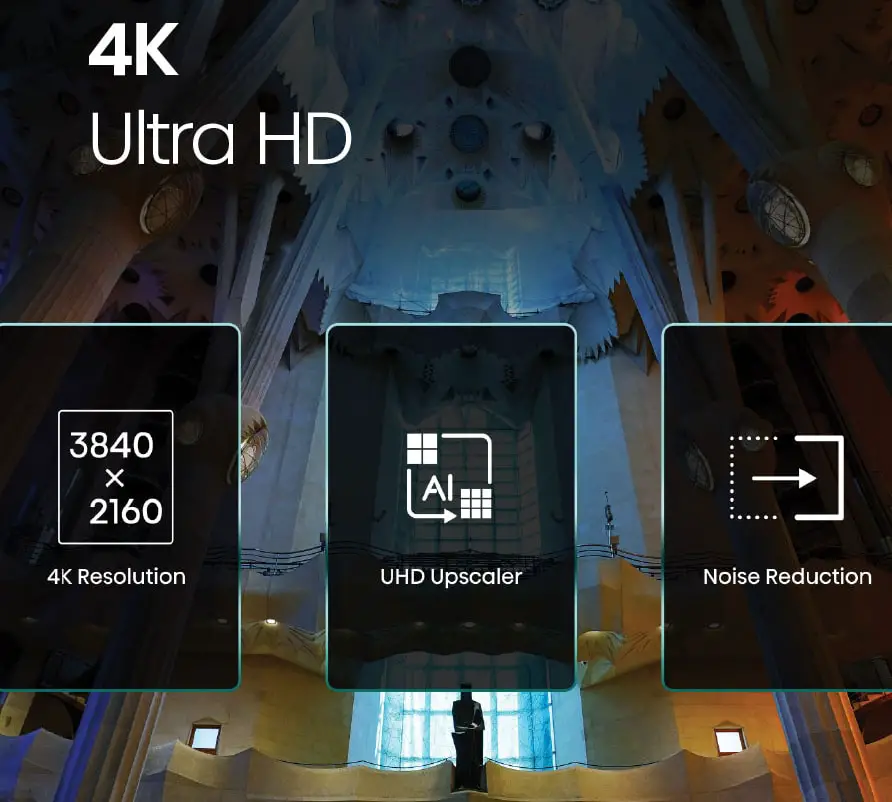
The A6G may not be full of image processing features but when it comes to up-scaling it proved to be a very decent performer. Most material we tested either it be low resolution broadcasting signals, DVD quality, 720p or 1080p videos everything showed good in 4K without any noticeable artifacts from the process.
Lighting technology used
The A6G is the first Hisense TV that we are reviewing in 2021 that comes with a Direct LED backlight instead of a FALD one that all models in the ULED lineup had.
The Direct LED system is using light behind the included IPS panel but is much less capable than a FALD system which means far less brightness output, less light accuracy and lower contrast which means that blacks will appear more greyish than true blacks. And with the A6G’s IPS panel low contrast capabilities the omission of Local Dimming makes things even worse.
Having a Direct LED system is pretty common the last few years in the lower end, budget friendly categories and in line with what we have seen in many other TVs with lower capabilities. At least having an IPS panel in combination with the Direct LED light system makes the A6G much less prone to any major burn-in problems.
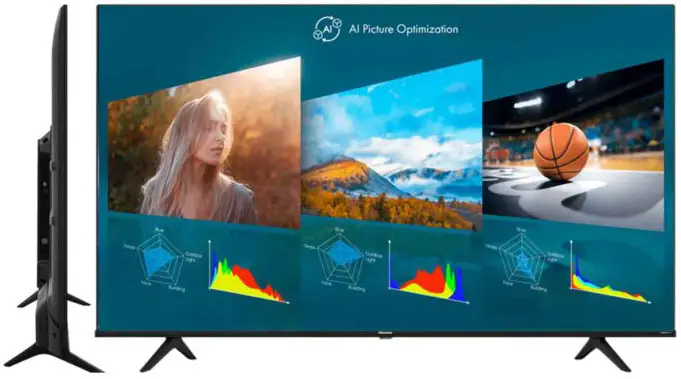
Brightness / Contrast
The A6G is obviously a TV with very limited capabilities so we had no high hopes when it came to its brightness output. And if you consider that Hisense has been giving theoretical brightness outputs for all their ULEDs but not for the A6G doesn’t sound very promising.
For this first part of our review we first measured the SDR brightness over a 10% window and for the A6G we got 258 nits which is not very good and the TV is surely going to have a lot of problems if placed in a very bright room. Keep in mind that these number we got with the backlight maxed out so this shows how limited the A6G is in this regard.
When it comes to HDR brightness over a 10% brightness we measured 272 nits which again is very low and it cannot display HDR content the way it should. With such a low brightness output highlights don’t stand out at all and the overall HDR effect is lost due to the dim image.
The TV is following the luminance curve pretty well up to its limit brightness but this has little overall effect due to its very low output level. The 55″ we have for testing comes with an IPS panel and contrast was not very good. In a very dark room blacks appeared more like dark grey and if you consider that there is no local dimming that could help makes things even worse.
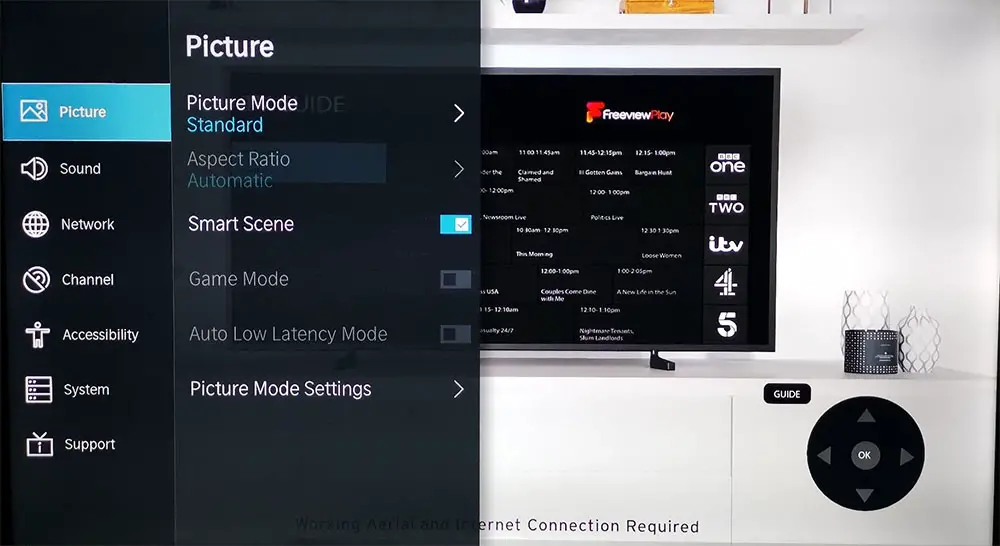
Keep in mind that the 50″, 60″, 70″and 85″ sizes use VA panels instead and although we cannot confirm this by ourselves they ought to have better contrast due to this fact.
Viewing angles
Here things are a bit more complicated. The A6G is using an IPS-type of panel, as we already mentioned, and this usually means good things when it comes to its viewing angles especially in comparison to TVs that come with VA panels. The A6G is not featuring any wide viewing angle technology that could potentially improve even further its performance but for an LCD TV it is very good. Not OLED good but no LCD TV can do that good even with some added layer that is used to improve this.
From what we saw the A6G retained image quality up to about 40 degrees of angle which can be considered very good making this model ideal for family rooms where many people will be watching from different angles. Anything more than that and the overall quality starts to degrade a lot. But to be honest anything more than that will make viewing rather difficult to begin with so this shouldn’t be a problem at all.
As we mentioned above the 50″, 60″, 70″and 85″ sizes all use VA panels and while these certainly would offer better contrast, in terms of viewing angles they should perform worse. Keep this in mind if you are considering one the these sizes and you want it for family use.
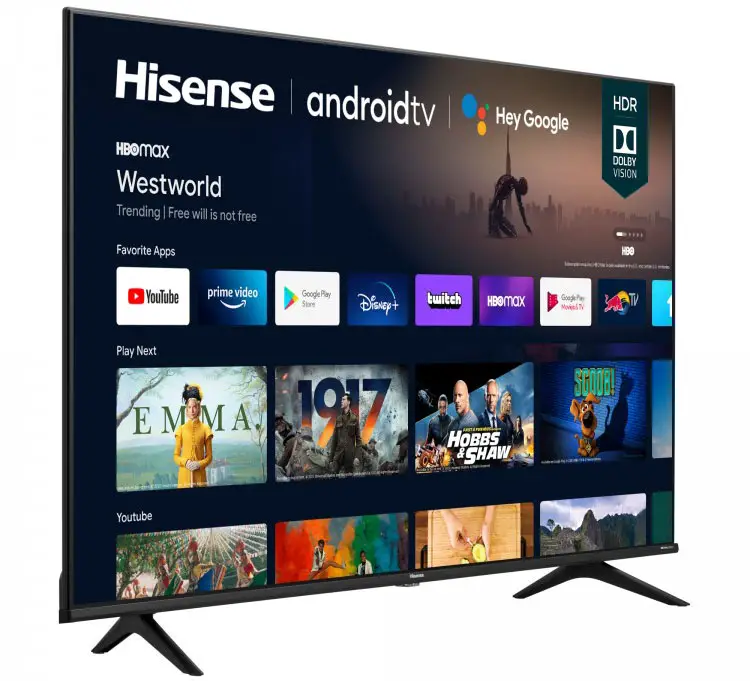
HDR support
With the current HDR war you really have to choose which camp you want to follow as not many brands support all available ones. It’s either Samsung’s HDR10+ or Dolby Vision that Sony and LG support which is really a shame as we don’t get the chance to choose all of them at any time. And while all the other Hisense models we tested would support all the available HDR protocols the A6G is the first one we see that comes only with the basic HDR10 along with Dolby Vision.
This means that there is no HDR10+ or HLG support but to be honest with such low brightness capabilities it doesn’t matter so much as the TV is not capable at displaying any kind of HDR image the way it should be. So the least of your concerns should be the omission of these two. And to be honest we were surprised to even have Dolby Vision in such a low priced TV anyway.
Color coverage
Next we will be looking at the colors performance and its interesting to see how the A6G can do it this field. The unit is missing the Quantum Dot technology that we found in the ULEDs above this one so for sure its colors performance will take a hit.
According to our measurements the A6G covers about 78% of the DCI-P3 color space which is ok for its price. On the wider REC.2020 color space we got 56% coverage which is very average but not very surprising to be honest. The price of the TV is extremely low and its color performance reflects that.
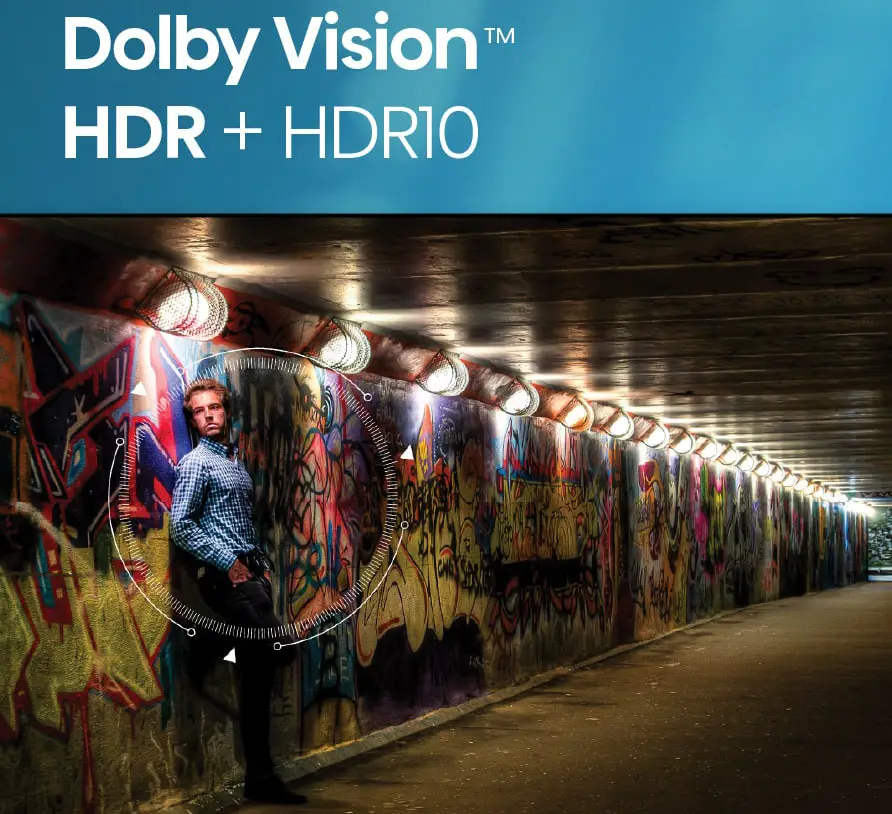
Surprising as it may seem the A6G had very nice color gradients with very little banding across all colors. Considering the low capabilities of the TV and its low color coverage it fared pretty good in this test.
Motion performance
The A6G comes with a 60Hz panel which certainly has a negative effect on the TV’s motion performance. The TV is stripped of most motion features and as such there is no motion interpolation or Black Frame Insertion (BFI). Overall motion on the A6G was ok but we did notice some image duplication probably due to the slow dimming frequency of its backlight. Overall its performance should be considered acceptable for its price but it’s nothing impressive or surprising good for what you pay.
Lastly as there are no HDMI 2.1 ports it was natural that the A6G would be missing VRR altogether. This includes all kinds of this technology either it be Forum VRR, FreeSync or NVIDIA’s G-Sync.
Input lag
If there is one area where we were hoping the A6G to do great then that would be in its input lag performance. And this turned out to be true as a 10.7ms input lag average was measured in both 1080p and 4K resolutions which is excellent and will satisfy even the most demanding of gamers. With such a low input lag gaming can really be a pleasure but in order to get such a low value you have to keep in mind that you need to use the available Game mode.
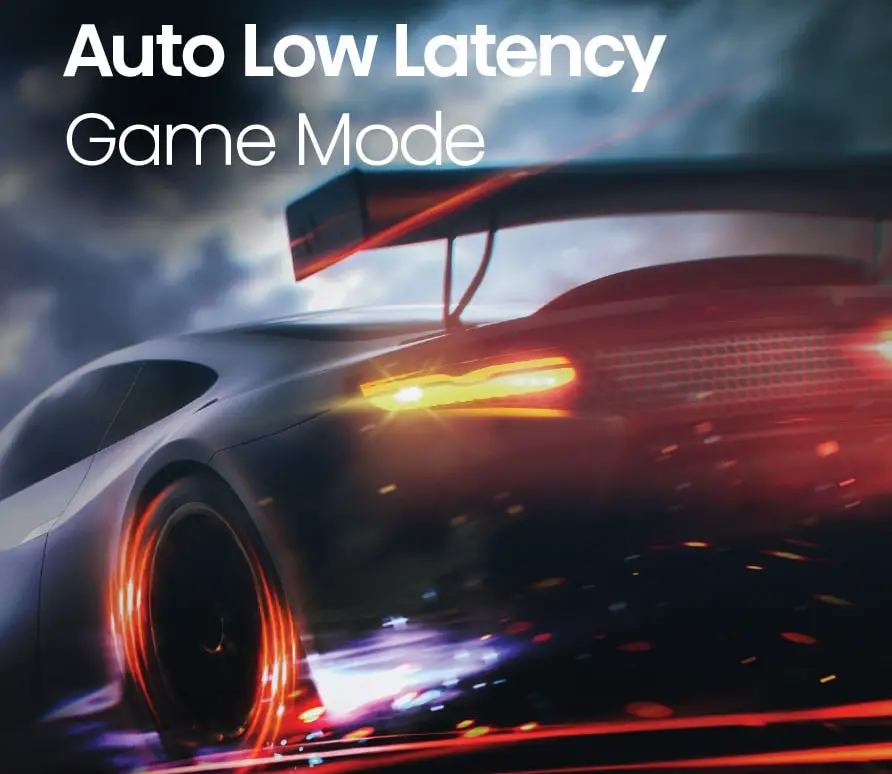
One thing that impressed us during our U6G review was how low input lag we measured even outside Game mode and it seems that the A6G showcased a similar behavior. As a result we got an average of 48ms input lag outside Game mode and while this may not be the lowest we have seen it is extremely low nevertheless and can be considered acceptable by any standards. Even with this number you can play many slower paced games without any trouble.
The TV may not not have any HDMI 2.1 ports but at least it supports Auto Low Latency Mode (ALLM) that can be used with any devices that support that like the PS5 and Xbox consoles and can greatly benefit users. Unfortunately, as with most Hisense releases, there is no HGiG mode available.
For our real world test we connected our PS5 to the A6G and used Game mode on the TV and Quality mode from the game settings in order to get an output of 4K@60Hz. As a result the kind of control and response time was excellent. The A6G rendered everything on screen blazingly fast and all our commands would register immediately resulting in a very smooth gaming session.
If you are a gamer and you are looking for a cheap gaming TV then the Hisense A6G will have no trouble fitting the bill.
Image quality impressions
If there was one characteristic with all the mid and high tier releases from Hisense was that they could offer specs at a price that no other brand is capable of. But the extremely low cost of the A6G seems to have a negative effect on that as there is not much room for Hisense to be flexible in terms of what they can offer more than the competition.
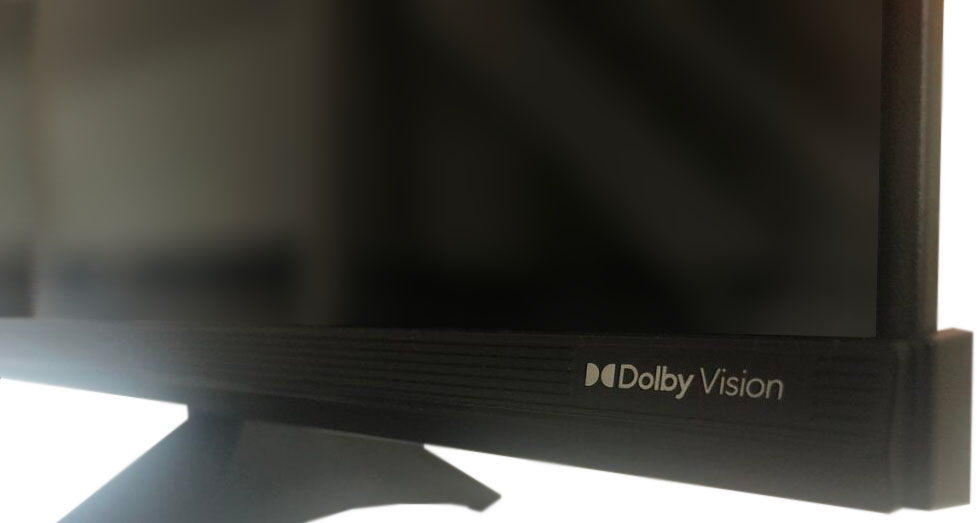
Yes, the A6G may have a couple of features that you don’t usually see in this price, Dolby Vision being the most obvious one, but if you look at its image performance as a whole it makes little difference as the limited capabilities in terms of brightness, color reproduction and contrast makes this addition a meaningless one.
The limited color palette on the A6G makes the picture look more flat and uninspiring and the low contrast make blacks appear dark greys instead. And if you like to watch in a low lit or completely dark environment this weakness will show its ugly face even more.
But it’s not all doom and gloom for the A6G as it proved to be a decent upscaler with most content we tried to render in 4K resolution without much problems. Motion was decent for what you pay for even if it is missing many motion features while it has good viewing angles due to the IPS panel (in some sizes only) and low input lag, enough to satisfy even the most hardcore gamers.
Audio Quality
Next in line is sound performance and from what we saw the A6G features a pretty standard 2.0 channels audio system with a total of 20 watts of power (2 x 10 watts) which is the normal for this category. As usual this type of system is more than adequate for casual viewing but if you plan on using the TV for movies then we would strongly suggest you to get at least a soundbar if not something better.
There are a few sound modes available to choose from but they don’t seem to make a lot of difference to be honest. The A6G drops Dolby Atmos support and instead we get DTS Virtual:X which is responsible for creating a more immersive atmosphere out of this limited hardware.
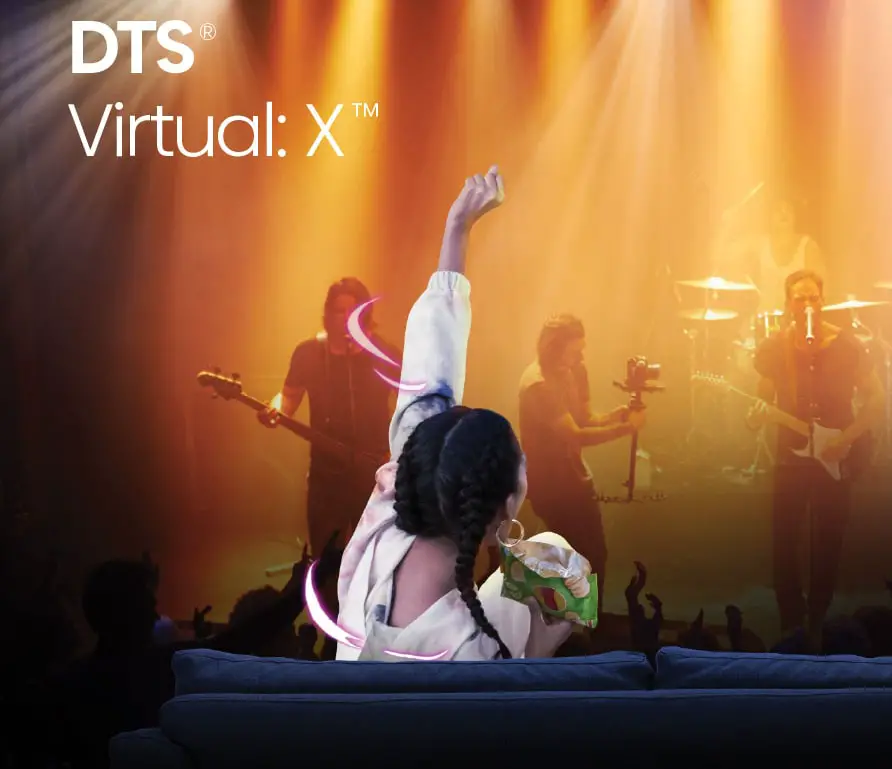
Nothing surprising here really, we tried a few different movies on it and what you get is distinct enough dialogue and a loud front soundstage but nothing more. The audio output cannot render the finniest of details while if you push the volume to the higher levels distortion will show its ugly face.
With Bluetooth streaming the TV grands you the ability to stream audio to some audio device like a soundbar or even headphones if these are capable of such a connection. Also you can pass audio through the available ARC port.
Usually it’s uncommon to find DTS Virtual:X support in this price range but even this cannot do much to improve on what the TV has to offer. The hardware simply is not capable enough and if for casual viewing the TV will do just fine it will certainly disappoint you if you expect anything more.
Ports and Connectivity
As we mentioned above the U6G comes with two sets of ports located at right side of the back panel. Those looking sideways include four HDMI ports, an optical digital output, two USB ports, an Ethernet port and the antenna/cable connector. At the other group looking backwards we find the headphones jack, and AV inputs.
As with the U6G, the A6G does not feature any HDMI 2.1 ports as for that you will have to go for at least the Hisense U7G. The ones we have here are all of them HDMI 2.0 meaning they can handle a maximum of 4K@60Hz. Also there is no eARC available with only a single HDMI port (HDMI 1) supporting the older ARC protocol. With it you can pass-through not only Dolby Digital but also DTS signals to an outside audio device as Hisense is one of the few brands that still supports DTS in their TVs.
Also the USB ports are the older 2.0 and although these shouldn’t have a problem with most files we would like to see at least one USB 3.0 available. But we cannot complain considering how lost cost this model is. Lastly the A6G, along with the U6G, seems to be one of the few TVs that still have analog ports. So it can be very handy if you still use these.
As for the TV’s wireless capabilities we get built-in WiFi (802.11ac) along with the Bluetooth although it is not mentioned anywhere which version the TV uses, which is very typical of Hisense.
It’s port layout is not all that different from what we saw in the U6G and really it is the best you should expect to see in this price range.
OS, Apps and Features
Hisense has been using the Android TV platform for their TVs but unlike Sony that switched to the Google TV interface, Hisense decided to use the standard Android TV platform once again. And in 2021 we have reached Android TV 10.0 which is not all that different from last year’s edition in terms of usage and UI presentation.
Keep in mind that the US version goes for Android while in Europe the A6G comes with the VIDAA U5 OS. In other markets one or the other OS is being used so it may not reflect what you read here as we are reviewing the US version of the A6G that comes with the Android TV OS.
Unlike webOS and Tizen the Android TV platform takes the whole screen when you enter its home screen and you get various selections on the top and left of the screen. Customization is also possible in certain parts of the layout that could help you organize various tiles and icons to your preference.

Although in general our experience with the latest version of the Android TV went without problems during our time with the A6G we did notice a few delays and lags, especially when we tried to navigate through the menus very fast or when we tried to open/close multiple apps very quickly. It was not so bad to lower the overall experience but it was noticeable at times.
If there is one thing that Android has in abundance that is definitely the huge support from developers. Through the included Google Play you can find literally thousands of apps that you can download and use except from the pre-installed ones. There is so much content available that you will definitely find the ones you are looking for and the list goes on and on.
Some of the most prominent names are all accounted for including Google Play TV & Movies, Netflix, Amazon Video, Sling TV, Hulu and Youtube as well as Pandora, Tidal, Google Play Music, Spotify or iHeartRadio. As always some of them are region dependent so make sure the ones you are interested in are working in your area.
Chromecast is also available here and it gives you the ability to stream content from other Chromecast enabled devices like mobile phones and tablets directly to the TV. Voice control is also present but it seems that it is a bit limited compared to other competing models. By that we mean that although you can use the remote’s built-in microphone to give commands to Google Assistant, for Amazon Alexa you will need an external Alexa enabled device to work.
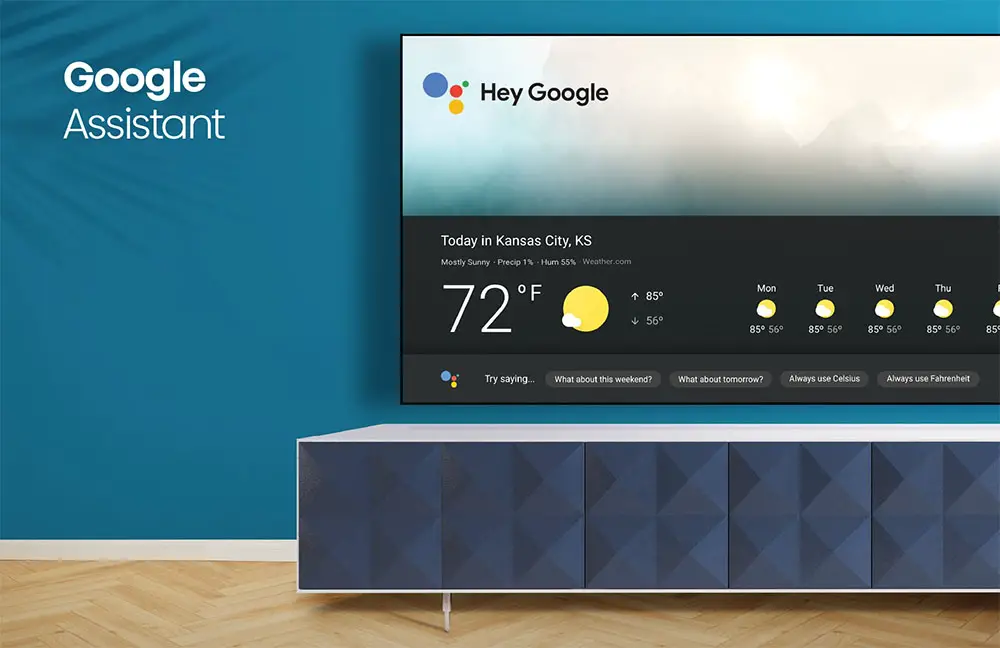
We have seen the same thing in some other Sony TVs that were using Android TV also and probably has to do with the fact that it’s using Google’s Android system and thus having Alexa built-in was not possible. With voice control you can issue various commands to the TV but functionality extends far beyond that as you can control any smart devices you have in your house also.
There is also a built-in media player available that you can use to playback various video and audio content from any external storage connected to the USB ports. Although this supports many frequently used files like .avi (XviD, Mpeg2, H.264), .mkv (H.264, H.265), .mpg (Mpeg2) and .ts (H.264, H.265) overall its capabilities are lacking compared to some other built-in media players from competing brands. Also in terms of audio it can only playback mp3 files.
Basically the internal media player seems to be exactly the same as the one we tested during our U6G review. It was capable at recognizing exactly the same types of video files and from our test material both TVs behaved exactly the same.
For being a low cost, budget-friendly TV, it was normal for Hisense to keep mostly the basics. There are some nice features included like Chromecast, voice control and Bluetooth streaming so it’s not like some other bare bones releases so if you look for something slightly better than the absolute basic, the A6G will pleasantly surprise you.
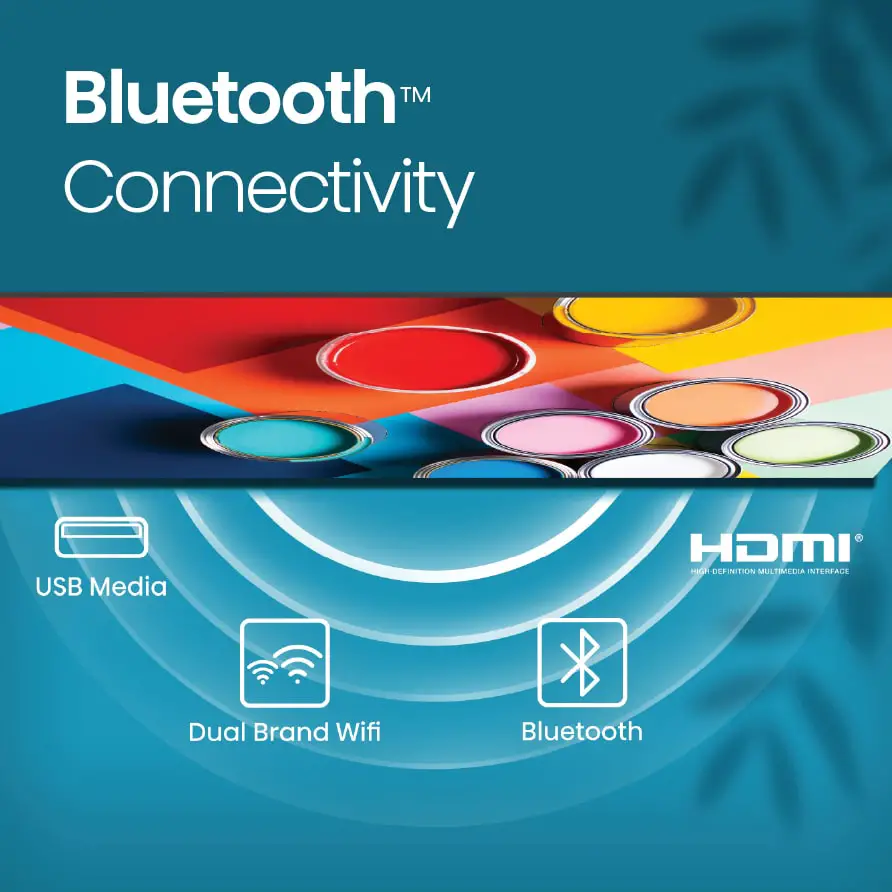
Final Thoughts
Usually when it comes to these low cost TVs most reviews are not really fare with them. Yes, if you look their performance as a whole they cannot come even close compared to the more expensive releases but price is everything. The 55″ we have for review here today costs at the time of writing $449 which is an exceptional price for a 4K HDR TV even with the limited capabilities of the A6G and this is how this unit should be judged.
Its strong points? Very good upscaling to 4K resolution, decent motion, good viewing angles for the sizes that use an IPS panel like the one we have here and low input lag for some trouble free gaming. Add to these the inclusion of Dolby Vision and DTS Virtual:X which we don’t see very often in this price range and the addition of Android TV 10 which comes with many streaming services, Chromecast built-in, voice control and a media player for playing files locally and you have a TV that certainly has its virtues.
On the other hand there are many aspects of the TV that do not allow it to perform as good as we would like. Its Direct LED panel doesn’t have either the brightness output or the light accuracy needed to make HDR content look as it should. Contrast was bad making blacks appear more grey than they should (again for the IPS models mostly) while color reproduction was very limited making the overall image look very flat instead. Audio was just adequate while we did notice some slow down during navigation with Android TV. Also keep in mind that there are no HDMI 2.1 ports here if this is something that really interests you.
Closing our review what we can say is that the Hisense A6G felt like it wanted to do much more than its hardware would allow it to. It has its merits but if you are looking for a good 4K HDR experience don’t expect to find it here. If you just want a low cost 4K TV to get the job done and get HDR capabilities as a bonus then the TV will not disappoint you. Keep your expectations at check, add a soundbar if you would like to have better audio immersion and you are set to go.
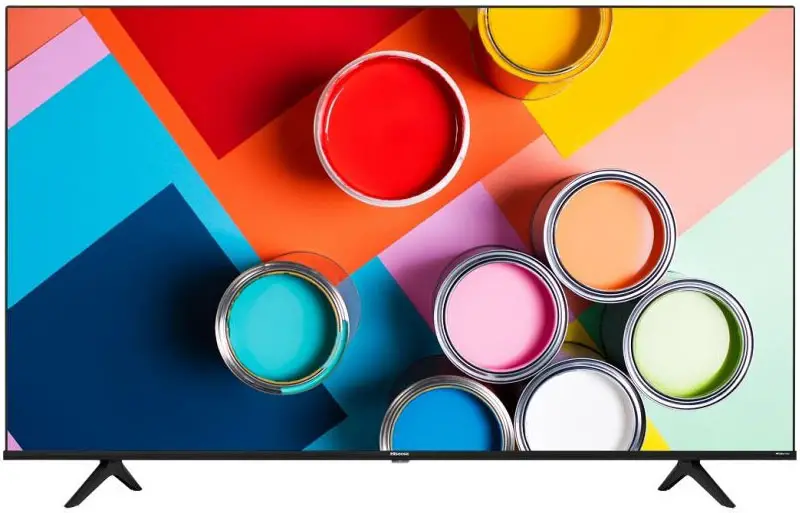
For more reviews you can check our dedicated 4K LED LCD TV reviews list or even look at our Product Reviews Table where you can find the brand and specific product you are looking for.
Cheapest Places to Buy :
*We are a reader-supported website. When you buy through links on our site, we may earn a small affiliate commission at no extra cost to you. Home Media Entertainment does not accept money for reviews.*
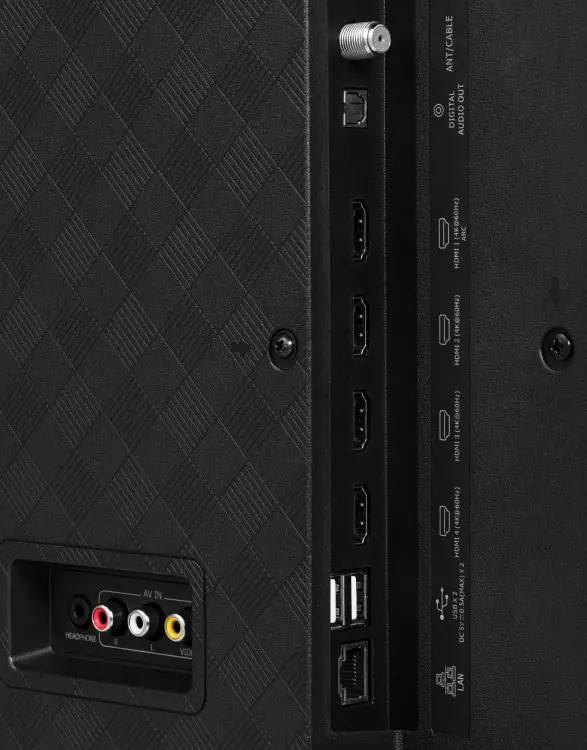
Hello! We have been living with a quirky TV for years. Basically, we want to find an updated model that will add enough new features to make it feel like we are upgrading, rather than just replacing a broken unit. The regular price is really low, but the brightness levels might become an issue in the bright room where the new TV will be kept. Can you comment on that?
Hey there. This is a bit of a hard question to answer. Obviously looking for this TV means that you don’t have high expectations out of it. It’s brightness is surely low in comparison to other models but the real question is if it will satisfy you. The only way to be sure about this is to check the TV in some local retailer. There is no other way around it.
My husband is redoing our garage into a work out space and we are looking for a TV for the area. So we are looking for a cheap TV that will do the basics and the A6G seems like a good one. Does it support Chromecast? We are using it a lot and this is one feature I do care to have.
Yes, the A6G does support Chromecast.
Hello there, I must say a very big thank you for creating this awesome review about the Hisense A6G. I have been planning on changing my TV for the past few weeks and I have been going through various reviews online and I think this is the one because it is within my budget and also has all the capabilities of a smart TV that I will ever need. Just one question. In my country the A6G comes with the VIDAA U5 OS. Do you know why?
Hey Nelson. To be honest I have no idea why Hisense went for different OS for different market. There are agreements between the manufacturers and the OS makers so who knows what kind of problems they had there to force Hisense to use different OS in different markets.
I just purchased my 58″ R6 Series Hisense T.V. I am VERY HAPPY with it, For the Price and just a Normal Typical User…I am Satisfied..
I don’t need all the extra’s and options,..
Give me a Nice Clear Picture and Decent Sound and I am Happy…Thank You again…
Hey Todd. Nice to see you enjoying it. Hisense has really good value there. Wish you all the best!
Hi Stratos, i have an Australian version of the 50A6G and have tried to install Disney+ but it will not load. I’ve read that a firmware upgrade will include it and have tried this but it’s saying that the firmware is up to date. Do you know when an upgrade for this model will be available?
Hello Alan. The Australian A6G is using the VIDAA OS, am I correct? Which version of it, is installed in yours, the U4 or U5? I did a bit of research and I found the following link.
https://hisense.com.au/blog/welcome-to-disney/
It seems that right now in Australia the Disney Plus app is supported in TVs with the VIDAA U5 which means from the Hisense A7G and above. It doesn’t mention anywhere about the VIDAA U4 so I don’t know if Hisense will add it at a later time unfortunately.